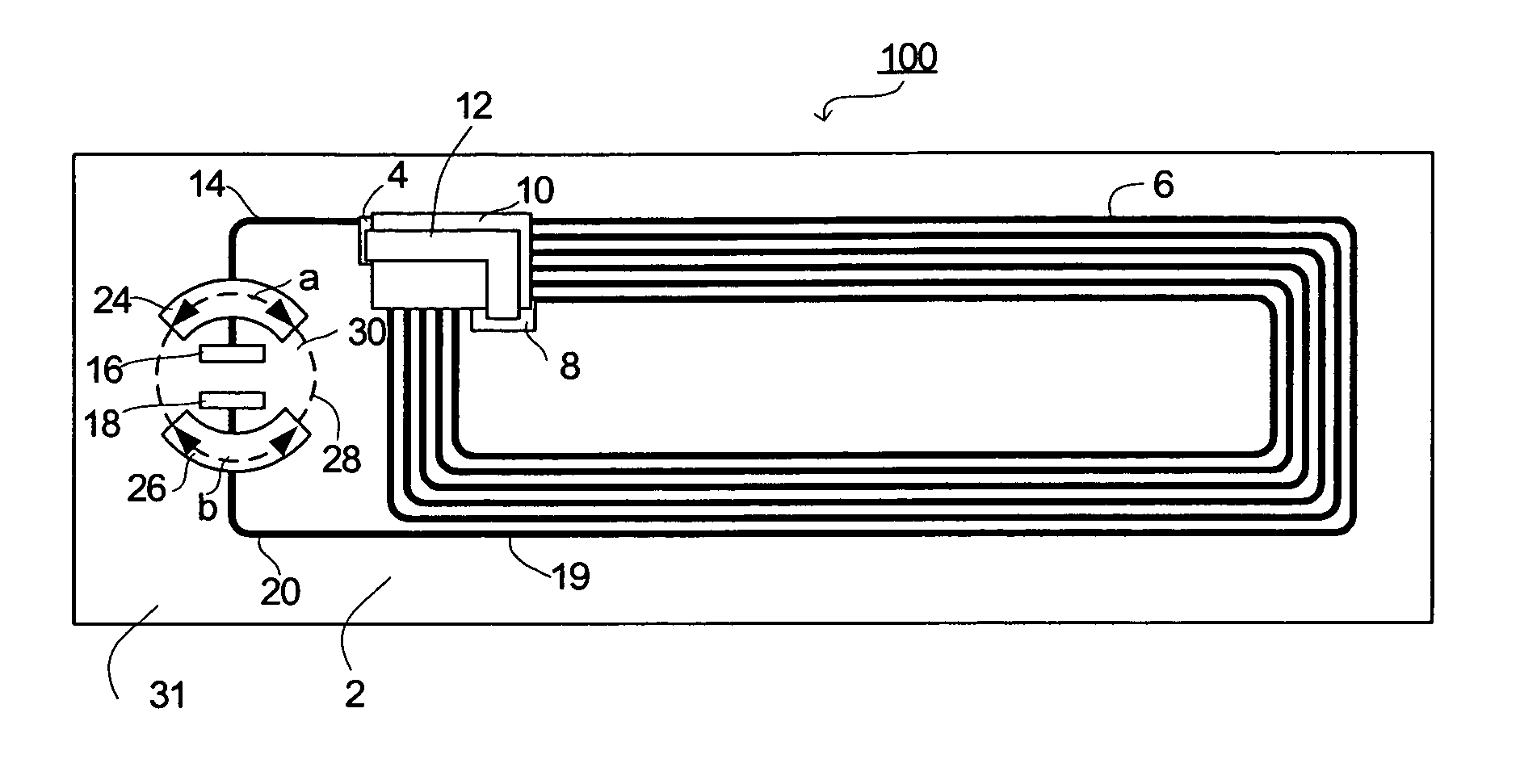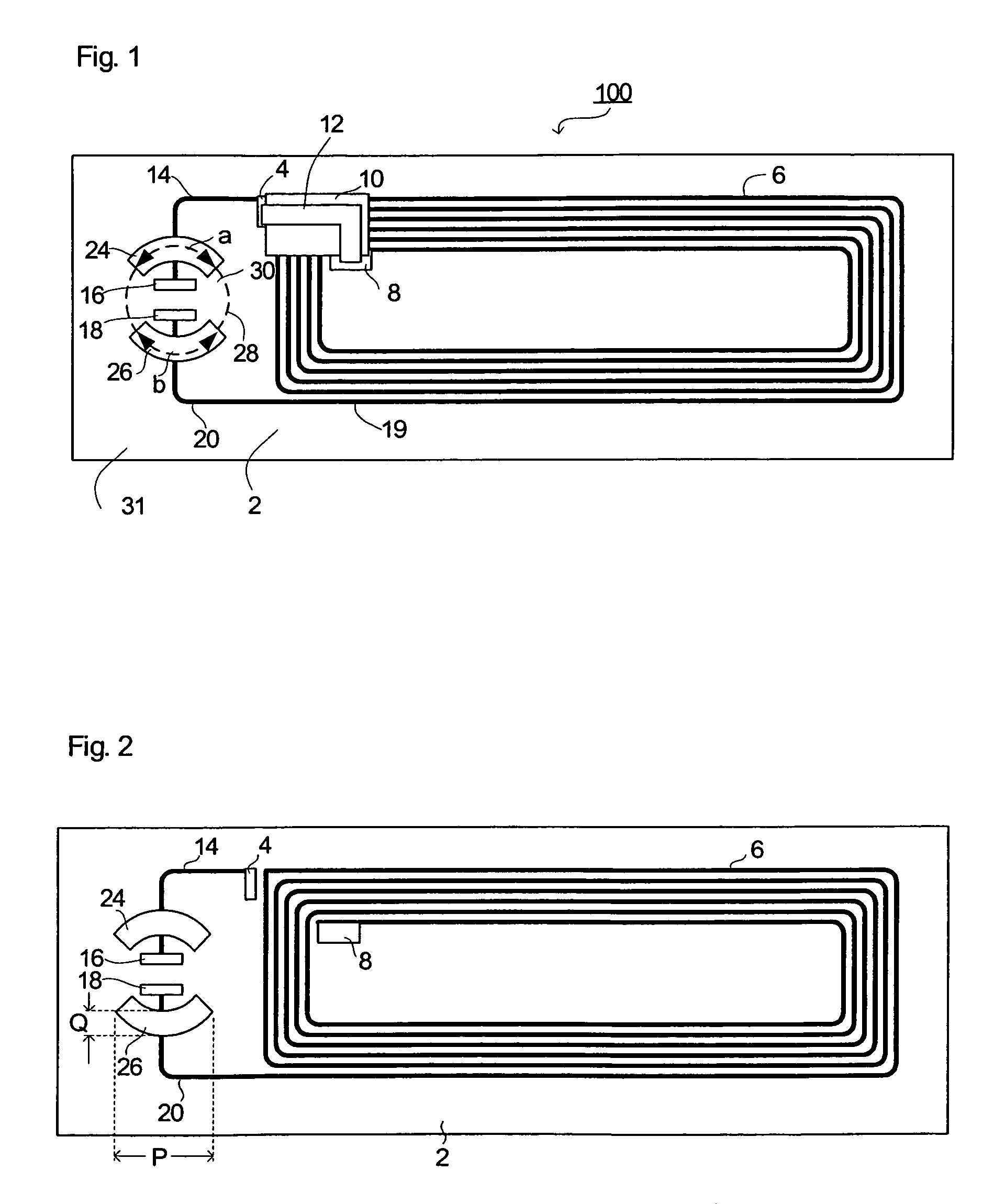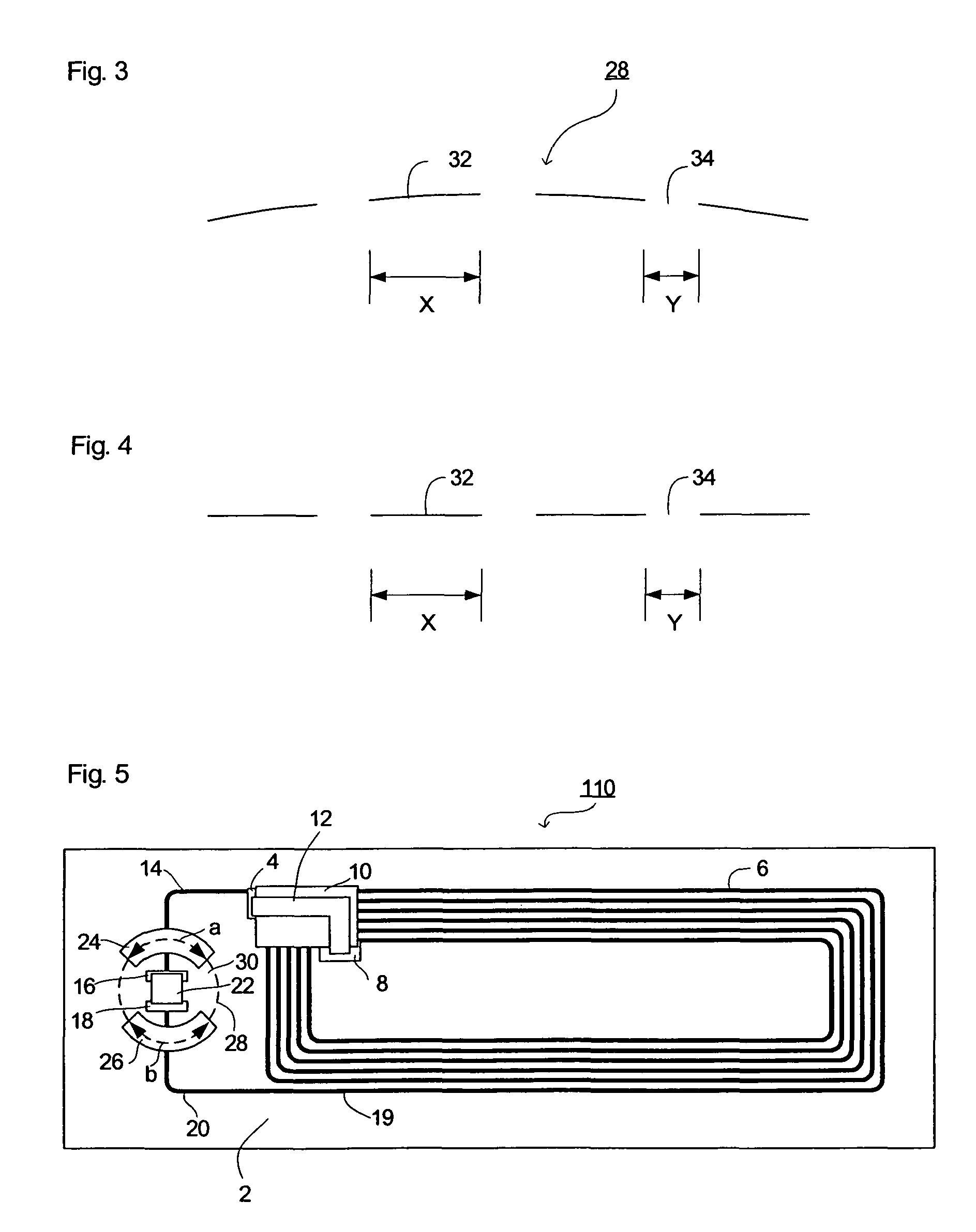IC tag
a technology of ic tags and resonant antennas, applied in the field of noncontact ic tags, can solve the problems of low reliability of ic tags produced, damage to electrical circuits in formation of broken lines, etc., and achieve the effect of reliably deactivating ic tags and visual confirmation of deactivation
- Summary
- Abstract
- Description
- Claims
- Application Information
AI Technical Summary
Benefits of technology
Problems solved by technology
Method used
Image
Examples
example 1
[0114]An IC inlet shown in FIG. 5 was produced and, using the IC inlet, an IC tag shown in FIG. 7 was produced by a procedure described below.
[0115]First, there was prepared a composite sheet [NIKAFLEX (trade name) produced by NIKKAN INDUSTRIES Co., Ltd., Cu / PET=35 μm / 50 μm] which is made by laminating a copper foil and a polyethylene terephthalate film (PET). On this sheet was printed, by screen printing, a resist pattern for formation of outer taking-out electrode 4, planar coil circuit portion 6, inner taking-out electrode 8, opposed electrodes 16 and 18, leads 14 and 20 and terminals for formation of broken line 24 and 26. The resulting sheet was subjected to etching to remove unnecessary copper foil portions, whereby a unified wiring pattern shown in FIG. 2 was produced.
[0116]The line width of the circuit was 0.2 mm.
[0117]Then, between the outer taking-out electrode 4 and the inner taking-out electrode 8, an insulating layer 10 was formed so as to cover the planar coil circuit ...
example 2
[0125]20 pieces of IC tags were produced in the same manner as in Example 1 except that terminals for formation of broken line 24 and 26 were formed using a silver paste. The terminals for formation of broken line 24 and 26, formed with a silver paste were formed by screen printing, simultaneously with the formation of a jumper 12. An IC chip was mounted and each resulting IC tag was confirmed for RFID function in the same manner as in Example 1. Then, the IC tag was attached to a polypropylene resin plate. 24 hours later, the IC tag was peeled from the resin plate. As a result, the IC tags of 20 pieces were cut off along the broken line, the circuit of each IC tag was destroyed physically, and the RFID function was lost.
example 3
[0126]20 pieces of IC tags were produced in the same manner as in Example 1. However, as shown in FIG. 6, a rectangular terminal for formation of broken line 62 of 10 mm in length and 15 mm in width was formed in a lead 20, and a closed rectangular broken line 64 of 15 mm in length and 5 mm in width was formed so as to divide the terminal for formation of broken line 62 into two parts. Each side of the rectangular broken line 64 was consisted of four straight lines as shown in FIG. 4; and the length Y of each uncut part 34: the length X of each cut part 32=1:2, and the length Y of each uncut part was 0.5 mm.
[0127]In the same manner as in Example 1, there was laminated a release material coated, by a screen coater, with an acrylic adhesive at the release treatment-applied side, on the whole portion of the substrate 2 side on which a circuit was formed.
[0128]Each resulting IC tag was confirmed for RFID function. Then, the IC tag was attached to a polypropylene resin plate. 24 hours la...
PUM
 Login to View More
Login to View More Abstract
Description
Claims
Application Information
 Login to View More
Login to View More - R&D
- Intellectual Property
- Life Sciences
- Materials
- Tech Scout
- Unparalleled Data Quality
- Higher Quality Content
- 60% Fewer Hallucinations
Browse by: Latest US Patents, China's latest patents, Technical Efficacy Thesaurus, Application Domain, Technology Topic, Popular Technical Reports.
© 2025 PatSnap. All rights reserved.Legal|Privacy policy|Modern Slavery Act Transparency Statement|Sitemap|About US| Contact US: help@patsnap.com



